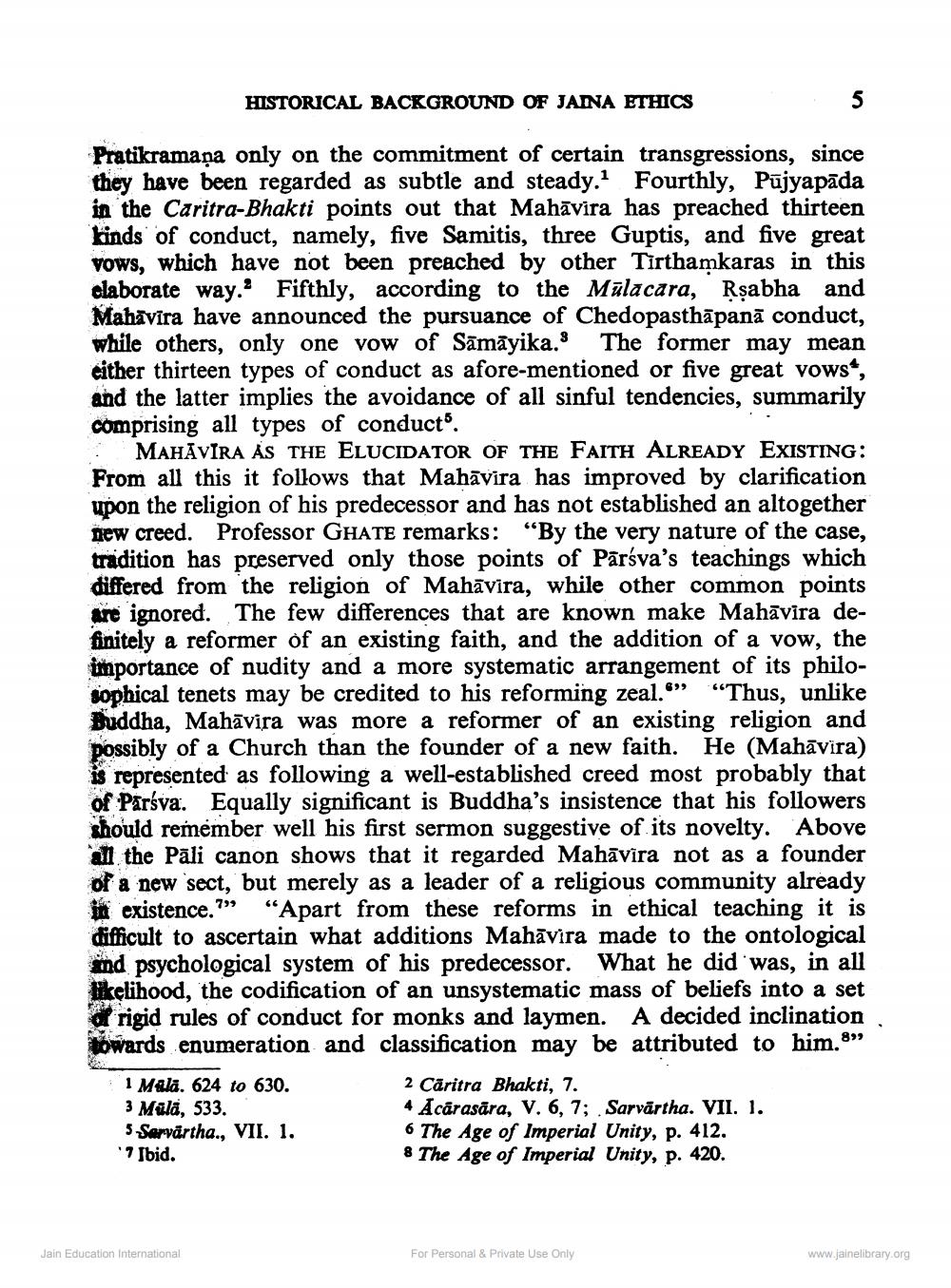________________
HISTORICAL BACKGROUND OF JAINA ETHICS
Pratikramana only on the commitment of certain transgressions, since they have been regarded as subtle and steady. Fourthly, Pūjyapāda in the Caritra-Bhakti points out that Mahāvira has preached thirteen kinds of conduct, namely, five Samitis, three Guptis, and Vows, which have not been preached by other Tirthamkaras in this claborate way.” Fifthly, according to the Mülacara, Rşabha and Mahāvīra have announced the pursuance of Chedopasthāpanā conduct, while others, only one vow of Sāmāyika. The former may mean either thirteen types of conduct as afore-mentioned or five great vows, and the latter implies the avoidance of all sinful tendencies, summarily comprising all types of conduct". MAHĀVIRA AS THE ELUCIDATOR OF THE FAITH ALREADY EXISTING:
all this it follows that Mahavira has improved by clarification upon the religion of his predecessor and has not established an altogether new creed. Professor GHATE remarks: “By the very nature of the case, tradition has preserved only those points of Pārsva's teachings which diifered from the religion of Mahavira, while other common are ignored. The few differences that are known make Mahāvīra definitely a reformer of an existing faith, and the addition of a vow, the importance of nudity and a more systematic arrangement of its philosophical tenets may be credited to his reforming zeal." "Thus, unlike Buddha, Mahāvira was more a reformer of an existing religion and possibly of a Church than the founder of a new faith. He (Mahāvira) is represented as following a well-established creed most probably that of Parsva. Equally significant is Buddha's insistence that his followers should remember well his first sermon suggestive of its novelty. Above an the Pāli canon shows that it regarded Mahāvīra not as a founder of a new sect, but merely as a leader of a religious community already mai existence.?” “Apart from these reforms in ethical teaching it is difficult to ascertain what additions Mahāvira made to the ontological and psychological system of his predecessor. What he did was, in all likelihood, the codification of an unsystematic mass of beliefs into a set d rigid rules of conduct for monks and laymen. A decided inclination towards enumeration and classification may be attributed to him.S” 1 Mala. 624 to 630.
2 Caritra Bhakti, 7. 3 Malá, 533.
4 Acarasära, V. 6, 7; Sarvartha. VII. 1. 5 Sarvartha., VII. 1.
6 The Age of Imperial Unity, p. 412. 7 Ibid.
8 The Age of Imperial Unity, p. 420.
Jain Education International
For Personal & Private Use Only
www.jainelibrary.org




